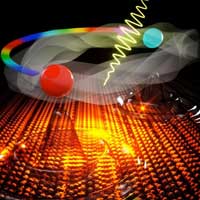 Scientists have discovered a new light-induced switch that twists the crystal lattice of the material, switching on a giant electron current that appears to be nearly dissipationless. The discovery was made in a category of topological materials that holds great promise for spintronics, topological effect transistors, and quantum computing.
Scientists have discovered a new light-induced switch that twists the crystal lattice of the material, switching on a giant electron current that appears to be nearly dissipationless. The discovery was made in a category of topological materials that holds great promise for spintronics, topological effect transistors, and quantum computing.
Tuesday, January 19, 2021
Light-induced twisting of Weyl nodes switches on giant electron current
 Scientists have discovered a new light-induced switch that twists the crystal lattice of the material, switching on a giant electron current that appears to be nearly dissipationless. The discovery was made in a category of topological materials that holds great promise for spintronics, topological effect transistors, and quantum computing.
Scientists have discovered a new light-induced switch that twists the crystal lattice of the material, switching on a giant electron current that appears to be nearly dissipationless. The discovery was made in a category of topological materials that holds great promise for spintronics, topological effect transistors, and quantum computing.
Using graphene, researchers increase optical data transmission speed by a factor of at least 10,000
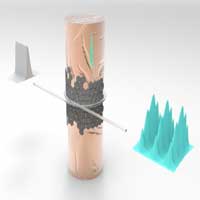 A pulsed-laser repetition rate of 57.8 GHz was achieved by inserting a resonator containing graphene. The limitations of the manufacturing process were overcome by directly synthesizing graphene onto standard copper wires.
A pulsed-laser repetition rate of 57.8 GHz was achieved by inserting a resonator containing graphene. The limitations of the manufacturing process were overcome by directly synthesizing graphene onto standard copper wires.
Nano-thin piezoelectrics advance self-powered electronics
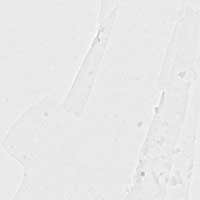 A new type of ultra-efficient, nano-thin material could advance self-powered electronics, wearable technologies and even deliver pacemakers powered by heart beats.
A new type of ultra-efficient, nano-thin material could advance self-powered electronics, wearable technologies and even deliver pacemakers powered by heart beats.
DNA origami enables fabricating superconducting nanowires
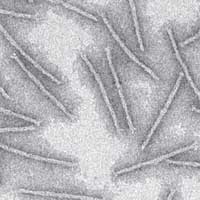 Fabricating nanoelectronic circuits of the future just got a lot more interesting, thanks to DNA origami.
Fabricating nanoelectronic circuits of the future just got a lot more interesting, thanks to DNA origami.
A little friction goes a long way toward stronger nanotube fibers
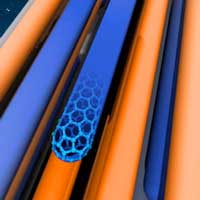 Carbon nanotube fibers are not nearly as strong as the nanotubes they contain, but researchers are working to close the gap.
Carbon nanotube fibers are not nearly as strong as the nanotubes they contain, but researchers are working to close the gap.
Navigation by atom - Coming to a vehicle near you
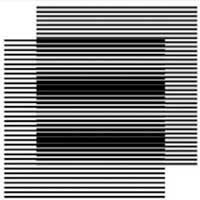 Instruments normally found in physics labs are making their way into everyday applications. Scientists have greatly expanded these instruments' capabilities.
Instruments normally found in physics labs are making their way into everyday applications. Scientists have greatly expanded these instruments' capabilities.
Dynamic duos: How nanoparticles attach
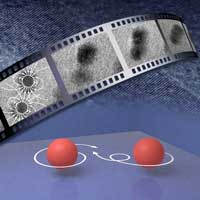 Researchers have established a quantitative understanding of how nano-sized particles assemble and crystalize for a model system of semiconductor zinc oxide.
Researchers have established a quantitative understanding of how nano-sized particles assemble and crystalize for a model system of semiconductor zinc oxide.
Scientists for the first time obtained experimental evidence of an intermediate state of matter between a crystal and a liquid
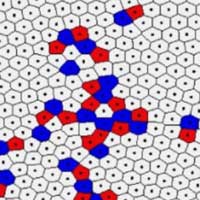 Scientists have experimentally confirmed the presence of an intermediate phase between the crystalline and liquid states in a monolayer dusty plasma system.
Scientists have experimentally confirmed the presence of an intermediate phase between the crystalline and liquid states in a monolayer dusty plasma system.
MOF aerogel turns air into drinking water
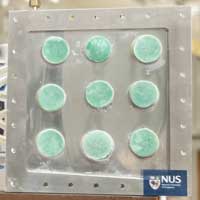 One kilogramme of the new material generates enough drinking water to meet a household's daily need, and does not require any external power source.
One kilogramme of the new material generates enough drinking water to meet a household's daily need, and does not require any external power source.
Subscribe to:
Posts (Atom)
